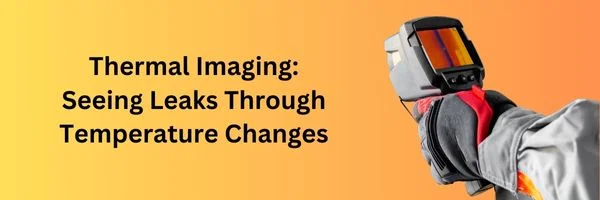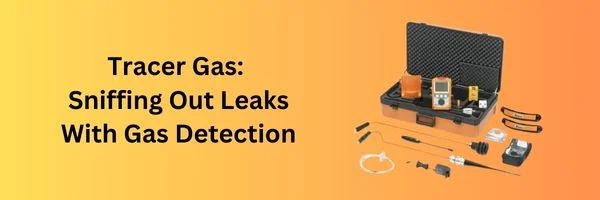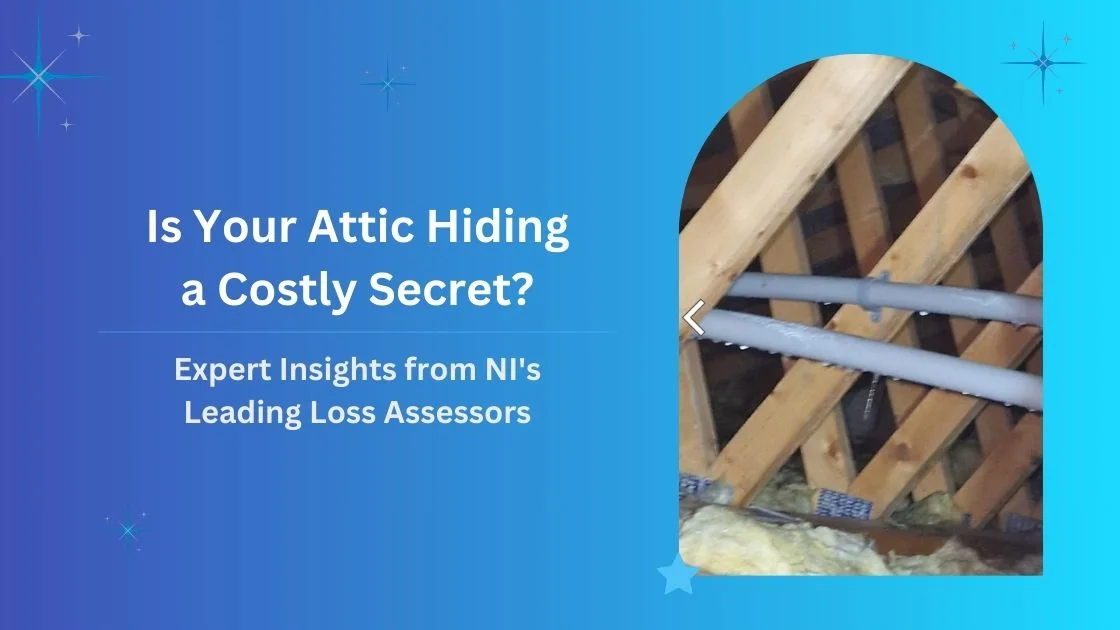Leak detection technology plays a crucial role in identifying water leaks to prevent waste and damage in homes and businesses. But how accurate is this technology, and can we rely on it to safeguard our properties effectively?
Water leaks in homes can be a costly and frustrating problem. Whether it’s a hidden drip behind the walls or an underground leak, water damage can lead to significant structural issues if not addressed quickly.
Fortunately, modern technology provides several accurate methods for detecting leaks without tearing apart your home. But just how reliable are these methods, and which techniques are the most effective?
This blog will explore the accuracy of various leak detection methods, focusing on acoustic listening, thermal imaging, and tracer gas. We’ll also look at how leak detection ties into home insurance policies in the UK, particularly through trace and access cover.
The Importance of Accurate Leak Detection
Water leaks can start small, often going unnoticed until the damage becomes substantial. They might come from a cracked pipe, loose fitting, or even corrosion in an older plumbing system. The longer a leak goes undetected, the more water escapes and seeps into walls, floors, or ceilings, leading to dampness, mould, and even weakened structural integrity.
Accurate leak detection is essential for locating the source of the leak without causing unnecessary damage to the building. Traditional methods often involved extensive exploratory work—knocking through walls or floors to find the problem area. Thankfully, today’s technology offers non-invasive solutions that can pinpoint the exact location of a leak with remarkable precision. But how do these methods work, and how accurate are they?
How Leak Detection Works
Leak detection involves identifying the exact location of a leak within a plumbing system. Whether it’s behind a wall, beneath a floor, or even in a concealed section of the roof, advanced techniques can help homeowners avoid unnecessary damage to their property during the repair process.
There are three primary methods for detecting water leaks in homes:
- Acoustic Listening Devices
- Thermal Imaging Cameras
- Tracer Gas Detection
Each of these methods has its own advantages and applications, depending on the type and location of the leak. Let’s dive deeper into how each method works and the level of accuracy it offers.
Acoustic Listening Devices
Acoustic listening devices are one of the most common and reliable methods of detecting leaks in a plumbing system. The principle behind this technique is simple: water leaking from a pipe under pressure creates vibrations or sounds as it escapes. These sounds can be picked up by specialised listening devices, allowing technicians to locate the leak.

How Acoustic Leak Detection Works
Acoustic leak detectors consist of a series of highly sensitive microphones or listening devices that can detect the sound of water escaping from pipes. The technician will place these devices at strategic points around the suspected leak area, listening for the distinct sound signature of water leaking. In most cases, the noise generated by a leak is more prominent in pressurised pipes, where the force of water escaping creates more audible vibrations.
Once the sound is identified, the technician will gradually narrow down the location of the leak by moving the listening device around the area. Modern acoustic leak detectors are incredibly sensitive, allowing them to pick up even the faintest sounds of water escaping, even if the leak is hidden deep behind walls or under floors.
Accuracy of Acoustic Leak Detection
Acoustic listening is an accurate method for detecting leaks in pressurised pipes, often pinpointing the location within a few centimetres. However, its effectiveness can vary depending on environmental factors such as background noise, the type of material surrounding the pipe (e.g., concrete or wood), and the depth of the leak. For leaks in quieter environments with little interference, acoustic devices can achieve high levels of accuracy, often locating leaks within a small radius.
Thermal Imaging Cameras
Thermal imaging is another non-invasive leak detection method that has become increasingly popular in recent years. This technique uses infrared cameras to detect temperature variations in walls, floors, or ceilings, which can indicate the presence of water.

How Thermal Imaging Works
Water leaks can cause temperature changes in the surrounding materials. For instance, a leak from a hot water pipe will create a warmer area, while a leak from a cold water pipe will result in a cooler zone. Thermal imaging cameras detect these temperature differences and display them as colour-coded images, with warmer areas shown in red and cooler areas in blue.
The technician scans the suspected leak area with a thermal camera, identifying anomalies in temperature that could indicate water presence. Once a temperature anomaly is detected, further investigation can narrow down the exact location of the leak.
Accuracy of Thermal Imaging
Thermal imaging is an excellent tool for locating hidden leaks behind walls and floors without causing any structural damage. It’s particularly useful in detecting leaks from hot water pipes, where the temperature difference is more noticeable. However, its accuracy can be influenced by factors such as the depth of the leak, the temperature of the surrounding materials, and the type of building material.
In ideal conditions, thermal imaging can detect leaks with a high degree of accuracy, often within a few inches. However, it may be less reliable for cold water leaks or leaks in materials that don’t conduct temperature changes as effectively.
Tracer Gas Detection
Tracer gas detection is another highly accurate method for finding leaks, particularly in low-pressure systems or where acoustic or thermal methods may not be as effective.

How Tracer Gas Detection Works
This method involves injecting a safe and non-toxic gas, usually a mixture of hydrogen and nitrogen, into the plumbing system. The gas is lighter than air and will escape through any leaks in the system. Technicians then use specialised detectors to track where the gas is escaping, thus locating the leak.
Tracer gas detection is particularly useful for locating leaks in areas where traditional methods, like acoustic or thermal, might struggle, such as non-pressurised systems or very small leaks. The gas can penetrate even the smallest cracks, making it highly effective for pinpointing hidden leaks.
Accuracy of Tracer Gas Detection
Tracer gas detection is one of the most accurate methods available, often capable of pinpointing the exact location of a leak with exceptional precision. It can locate leaks in both pressurised and non-pressurised systems, making it highly versatile. The main limitation of tracer gas is that it requires the system to be drained before the gas can be injected, which can add some time and complexity to the process. However, in terms of accuracy, it’s one of the most reliable methods, especially for detecting smaller, hard-to-find leaks.
How Accurate is Leak Detection Overall?
When it comes to leak detection in modern homes, the accuracy of the detection method is generally very high. Whether using acoustic listening, thermal imaging, or tracer gas detection, these technologies have been developed to ensure minimal disruption to your home and provide accurate results. Here’s a quick comparison of their accuracy:
- Acoustic Listening Devices – Very accurate for pressurised systems, typically locating leaks within a few centimetres, but less effective in noisy environments or for very small leaks.
- Thermal Imaging – Accurate for locating temperature anomalies caused by leaks, especially for hot water systems, though less effective for cold water leaks or in certain building materials.
- Tracer Gas Detection – One of the most precise methods, capable of finding even the smallest leaks, but requires additional steps to drain and refill the system.
Overall, these methods are highly effective, and the choice of technique often depends on the specific characteristics of the leak and the property. In many cases, a combination of these methods may be used to ensure the most accurate results.
How Are Leak Detection Works Checked?
Once a leak is detected, it’s important to verify that the repair work addresses the problem completely. After the plumber repairs the leak, the system is typically retested to ensure that no other leaks are present. This can involve another round of acoustic listening, thermal imaging, or tracer gas detection to confirm that the issue has been resolved.
In some cases, the water system may be pressurised again, and the same detection methods used to check for any lingering problems. This thorough process ensures that the detected leak has been properly repaired and that no further issues are left to cause damage.
Trace and Access Cover in UK Home Insurance
Many homeowners in the UK may not be aware that their home insurance policies often include something known as trace and access cover. This cover is specifically designed to help with the cost of detecting and accessing a leak.
Trace and access cover typically covers the expenses associated with locating a leak within a property. This can include the cost of using leak detection methods such as acoustic listening devices, thermal imaging, and tracer gas, as well as the cost of any exploratory work that may be needed to access the leak once it’s found.
While trace and access cover doesn’t usually cover the cost of repairing the actual leak (e.g., replacing a broken pipe), it can significantly reduce the overall expense of fixing the problem, as it limits the damage done to the property during the detection process. Depending on your policy, trace and access cover can save homeowners hundreds or even thousands of pounds, especially if the leak is located in a difficult-to-access area like under a concrete floor or behind a tiled wall.
Conclusion
Leak detection technology has advanced significantly over recent years, providing homeowners with accurate, non-invasive ways to locate water leaks in their plumbing systems. Acoustic listening devices, thermal imaging cameras, and tracer gas detection methods are all highly reliable, each with its own strengths depending on the type and location of the leak. While each method has its limitations, combining them can often produce the most accurate results.
Furthermore, with many home insurance policies in the UK offering trace and access cover, homeowners are in a better position than ever to tackle leaks without breaking the bank or causing unnecessary damage to their property. By investing in accurate leak detection, homeowners can avoid the significant costs and disruption associated with water damage, ensuring their plumbing systems remain in top condition for years to come.
Accurate leak detection isn’t just about finding the source of the problem—it’s about protecting your home and ensuring that repairs are carried out quickly and effectively, safeguarding your property from long-term damage. Working with a professional leak detection service ensures that even hidden leaks are uncovered before they can cause extensive structural issues. While leak detection company costs may vary depending on the complexity of the job, investing in timely detection can save homeowners significant money in future repair expenses. Quick intervention helps maintain the integrity of your home and prevents the need for costly, large-scale overhauls down the line.



